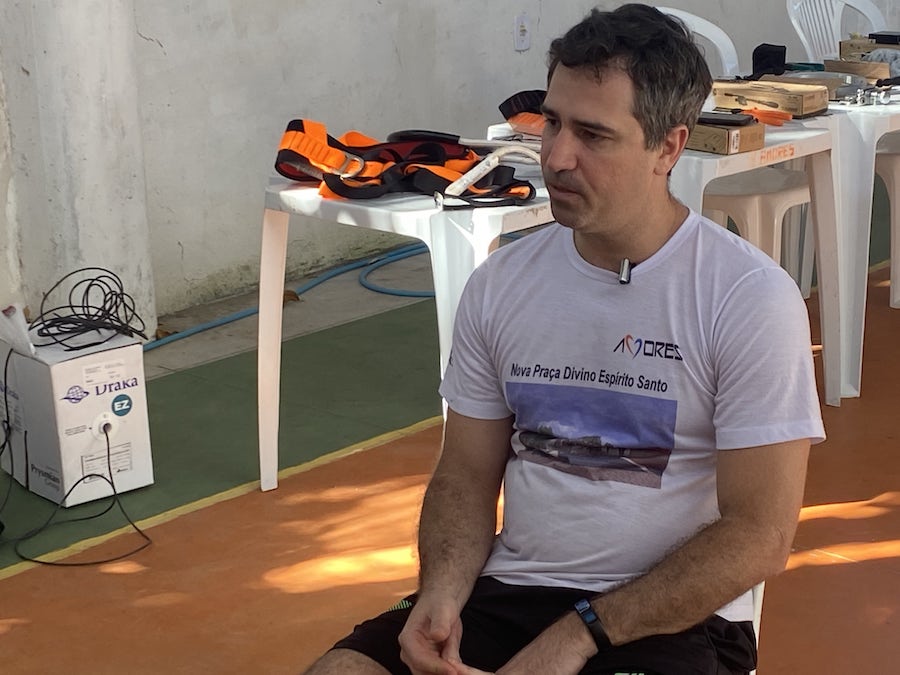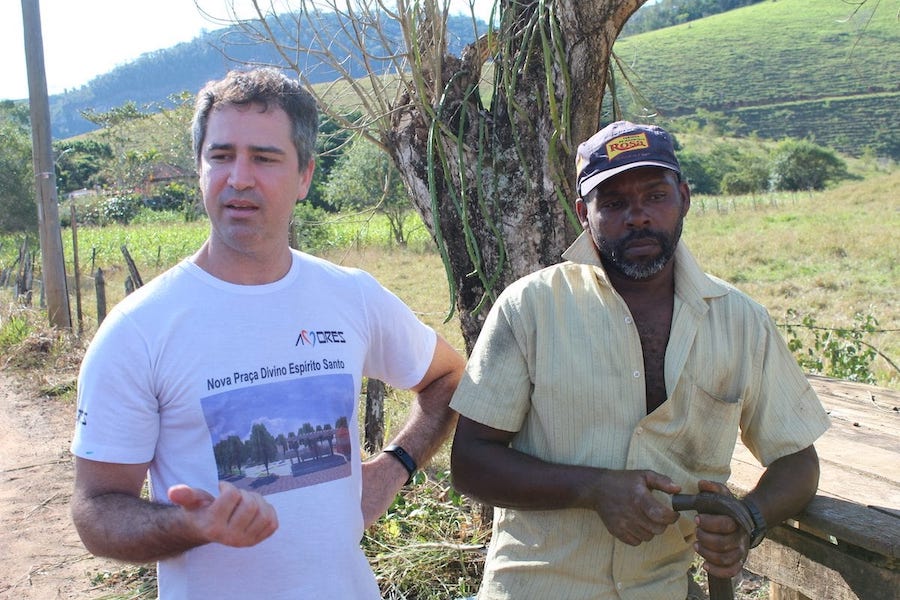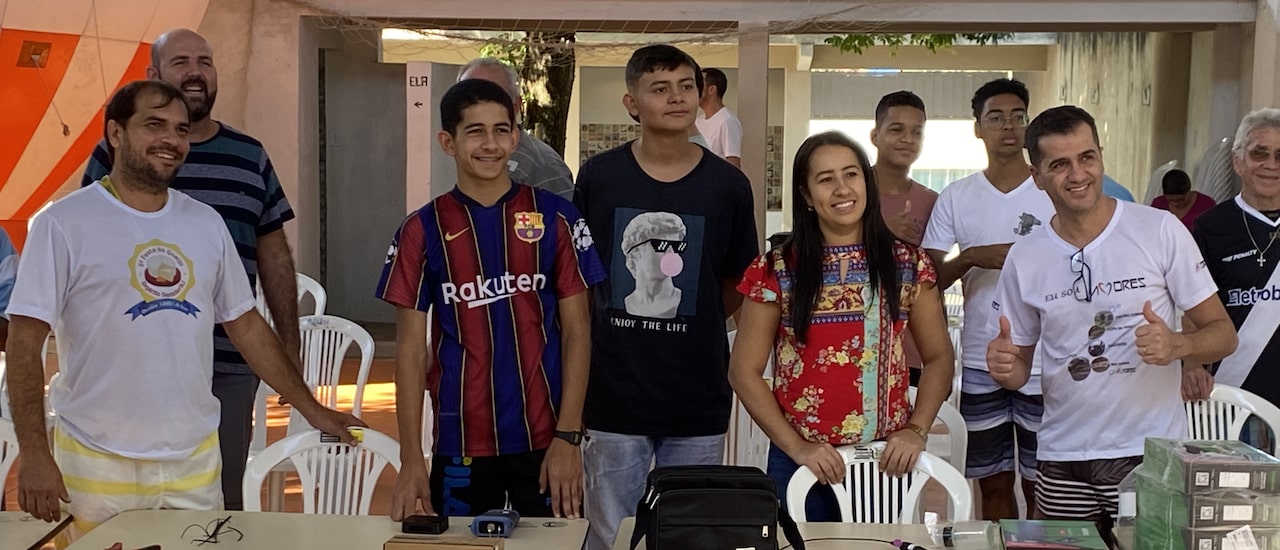Jorge Elias Oliveira Farias is a farmer in rural Brazil. But he’s recently added a new title to his resume: content creator. Excited about the arrival of broadband on his property, he’s set up his own YouTube channel, where he shares his work routine and helps others by teaching them how to do the small, day-to-day tasks it takes to run a farm, like keeping the cattle’s vaccines up-to-date.
His newfound Internet access was made possible by a partnership model that could connect other communities in Brazil, where over a quarter of rural households are unconnected.
Until 2019, the Internet was out of reach for most residents in Jorge’s rural community of Espírito Santinho, located in the state of Rio de Janeiro. It remains out of reach for many Brazilians in isolated areas.
Over the past decade, Brazil has modernized its public services, investing in ways to engage its citizens online—while saving them the trouble of waiting for hours in person to solve issues that could be done from home in minutes. The pandemic brought even more changes, as rates of distance learning and online education increased. With the pandemic came the hope of reaching people living outside of the largest cities and bringing them social and economic opportunities.
But with limited access to the Internet, people in rural and isolated areas still can’t reap all its benefits.
Espírito Santinho, a community that’s traditionally relied on a farming economy, was one of the areas left behind. Residents were shut out by traditional Internet providers, who prioritized residents in the urban area.
Now, the community’s championing a connectivity model that other rural areas in Brazil can benefit from—while improving the lives of its own residents.
It started with a single partnership.
First Steps: A Wireless Community Network

Wagner da Silva Crespo, president of the AMORES resident’s association in Espírito Santinho
Wagner da Silva Crespo couldn’t accept the fact that his neighbors were so isolated from the world. With a degree in Automation Control Engineering from Federal Fluminense Institute (IFF) and experience working with the Instituto Bem-Estar Brasil (Brazil Welfare Institute, or IBEBrasil) to set up two community networks in nearby communities, he became the visionary behind Espírito Santinho’s success.
“Our objective is this: to bring the facilities that we have in cities to people who do not have access to the Internet, either because the network does not reach us, or because of financial difficulties,” he says.
Forming a partnership was the critical first step, bringing together technical expertise, local knowledge, and funding to bring this dream to life. In 2019, Wagner, working through AMORES—the local residents’ association he presides over—he teamed up with IFF and IBEBrasil to build a wireless community network. They came up with a solution to connect the local population to the Internet by using radio spectrum, which reaches the community through antennas installed on nearby hills and homes.
IFF provided the equipment, including antennas and routers. IBEBrasil, led by Marcelo Saldanha from the Internet Society Brazil Chapter, brought its experience in community mobilization to build community networks. They offered training and initial technical support. It was up to AMORES to mobilize the community to be the managers of the network, maintained using a small monthly contribution from each user.
“What motivates us is to come to a community like Espírito Santinho and see people build their own access. This is emancipating,” says Saldanha.
But radio connectivity brought challenges: the geography of the region is a natural barrier to network expansion and good service quality. The hills surrounding Espírito Santinho made it difficult for the signal to reach several spots in the central area, where homes are concentrated. Wagner and the team realized they needed fiber optic cables to solve the problems of access and signal quality.
Expanding Partnerships to Improve Connectivity
To go from wireless Internet to fiber, AMORES needed more resources and a new partnership. They reached out to the Internet Society for support, and soon they were ready to take the community network to the next level.
They chose a model close to what is known in Brazil as “neutral networks.” It’s where an Internet access infrastructure is shared by more than one provider. In the case of Espírito Santinho, a small local provider—Essa Internet, which was already serving some customers in the region commercially—joined to help implement the last mile of fiber. AMORES then took on the role of connecting people in the community to the network. They were also responsible for the maintenance costs and management.
“This model reduces the operating costs of the partner provider and offers advantages to the user of the community network, including economic ones,” says Saldanha.
He says the community network is bringing several opportunities to people in Espírito Santinho.
“Today, we have digital government policies where most of the services require access to the Internet. With quality connectivity, the community also benefits from having access to education, skills development, being able to do business over the Internet, and many other possibilities.”
Communities in Brazil have relied on these kinds of community networks to connect to the Internet for years. They’ve adapted the infrastructure and technology according to their needs and geographical conditions, and used them to stay safe in areas of conflict. This adaptability is what makes community networks a promising solution to connect people living in rural and remote areas.
Improved connectivity is already having an impact within Espírito Santinho’s agricultural business. Farmer and new content creator Jorge Elias Oliveira Farias sees opportunity and hope.

Wagner da Silva Crespo with Jorge Elias Oliveira on his farm
“A lot of things I don’t know, the Internet teaches. It’s like taking a course or attending college. For me, the Internet comes in handy,” he says.
Because of lack of Internet access, his own two daughters left Espírito Santinho to study in the city. Now that the region has access, he dreams of their return.
Championing an Internet for Everyone
Marcelo Saldanha has big dreams, too. Since 2010, IBEBrasil has advocated to include Internet access in the federal constitution, which would raise its status to a fundamental right. It would strengthen community networks like the one in Espírito Santinho. More than that, when the government recognizes community networks as key to connecting all Brazilians, these homegrown solutions could help connect the last quarter of rural communities.
The kind of partnerships that brought the Internet to Espírito Santinho are crucial to this—and they could propel Brazil to a new level of social and economic development.
“Despite the difficulties, what moves us is to embrace this cause and build the Internet we wanted from the start: a plural Internet, where everyone can have access to all content, to all rights. It is the democratization of telecommunications,” says Saldanha.
Communities all over the world are connecting the unconnected. You can help.
Image copyright: ©IBEBrasil

